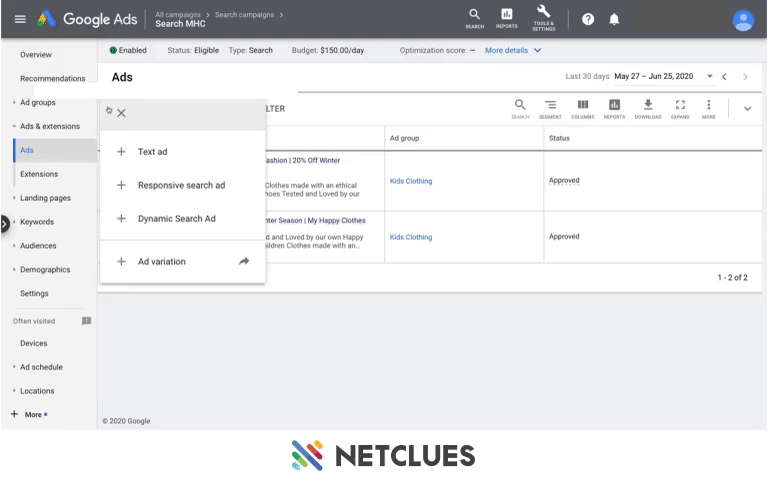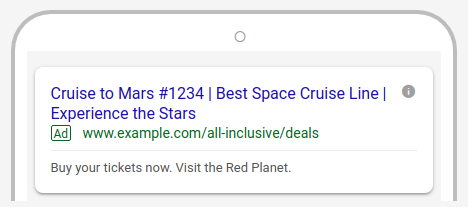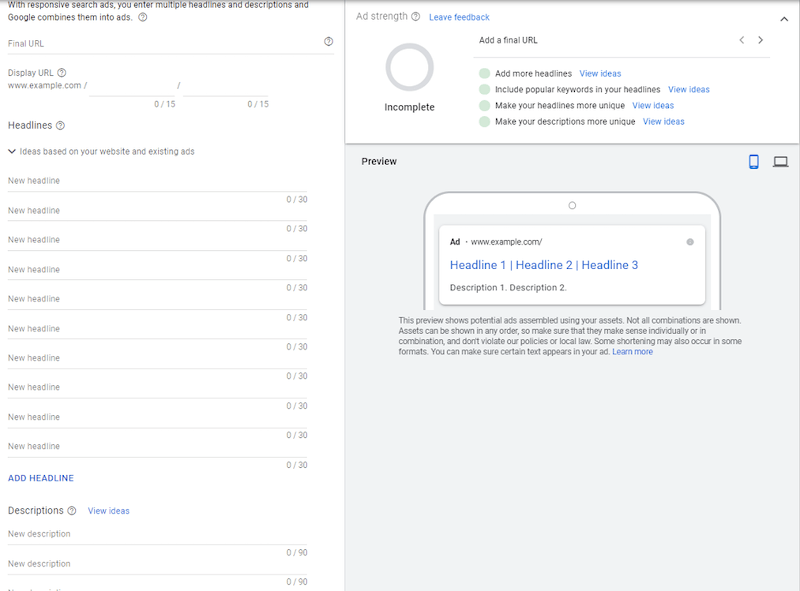Google is permanently transitioning to Responsive Search Ads

Brands need to look for ways to improve how they advertise themselves constantly. Google is giving brands an interactive option backed by AI to help advertisers gain the best engagement on their advertisements.
Google is now opting to change its default mode of advertising to Responsive Search Ads. Before we discuss the benefits of Responsive Search Ads (Responsive Search Ads), let's learn about the meaning of Responsive Search Ads.
What is Responsive Search Ads?
Responsive Search Ads is a type of advertising on Google that allows advertisers to provide more headlines and descriptions for ad listings, 15 headlines and four descriptions, to be precise. Responsive Search Ads's Machine learning algorithm displays your ad to people with the best possible combination of the headlines and descriptions to generate more traffic to your website.
Earlier, Google used to allow advertisers to run expanded text ads as a default choice. The advertisers will not have that option anymore from June 30, 2022.

When we compare the space that Expanded Text Ads used to give with the space Responsive Search Ads provide, the latter is superior as they allow advertisers to reach more audiences. Responsive Search Ads uses keywords present in the ads to make ads visible in different search results to attract potential customers for brands. Responsive Search Ads' primary function is to use the keywords provided by the advertisers and customize them according to the user's search query, location, or area of interest.
Google predicts that advertisers will see a growth of almost 7% in conversions with Responsive Search Ads while their investment cost remains the same. Let's look at the format which allows Responsive Search Ads to provide a significantly larger ground to advertisers to promote their products.
Responsive Search Ads Format
The format of your ad appearing on Google search results remains the same: three headlines and two descriptions.

While preparing the ad campaign, the format has more headlines and descriptions for the advertiser to fill out.

Remember that the advertiser must fill out a minimum of three headlines and two descriptions for the ad to be valid.
Google has also introduced pinning headlines keeping in mind that some advertisers might want some headlines in their ads to always appear on the search results. The advertiser must put the headline it wants to pin in the search result in headline position number one.
Google provides advertisers with its Ad strength tool to show how strong their ad is for the most favorable performance in the search results. This tool takes quantity, relevance, and diversity of ad copy into consideration to range the overall effectiveness of a relevant ad from "Incomplete," "Poor," "Average," "Good," to "Excellent."
| EXPANDED TEXT AD | RESPONSIVE SEARCH AD | |
|---|---|---|
| Number of headlines (in setup) | Up to 3 (30 characters each) | Up to 15 (30 characters each) |
| Number of descriptions (in setup) | Up to 2 (90 characters each) | Up to 4 (90 characters each) |
| Number of headlines shown | 3 | Up to 3 |
| Number of descriptions shown | 2 | Up to 2 |
| Max. length of ad shown | 150 characters | 300 characters |
| Arrangement of assets | Static (as written down) | Automatic |
What's in it for the advertisers?
- Advertisers now have the opportunity to create more flexible ads and save time for themselves.
- Responsive Search Ads also smartly adapts to device widths creating a better user experience and giving advertisers more board to share messages with prospective clients.
- Responsive Search Ads is based on the user's browsing behavior which helps the advertisers to deliver more personalized ads to the users.
- With different combinations in play, the probability of various CTAs appearing in the ad increases, giving users more ways to interact with the ad copy, thus increasing engagement.
Conclusion
With this move, Google aims to push advertisers towards automation and put more responsibilities on their machine-learning algorithm to make advertisers' lives more manageable.
Netclues Awards & Recognition
At Netclues we intent on being a company that the entire community is proud of. We invest greatly in people & technology. We have some extremely talented people who work with us to give our clients exceptional products & service. We never satisfy with “good enough” we always aim for perfection & excellence. We work extremely hard and now and again get recognized for it as well.
About Us
Netclues is a team of web development experts, who came together years ago with a vision to offer enterprise and organization level solutions to clients. Equipped with the best people, first hand experience and the best technological backbone of the industry, we bring businesses face-to-face with profitability and an intensive brand awareness. One thing about us, which we feel elation in elaborating, is our capacity to customize


